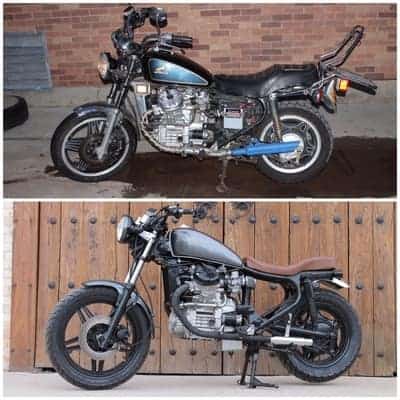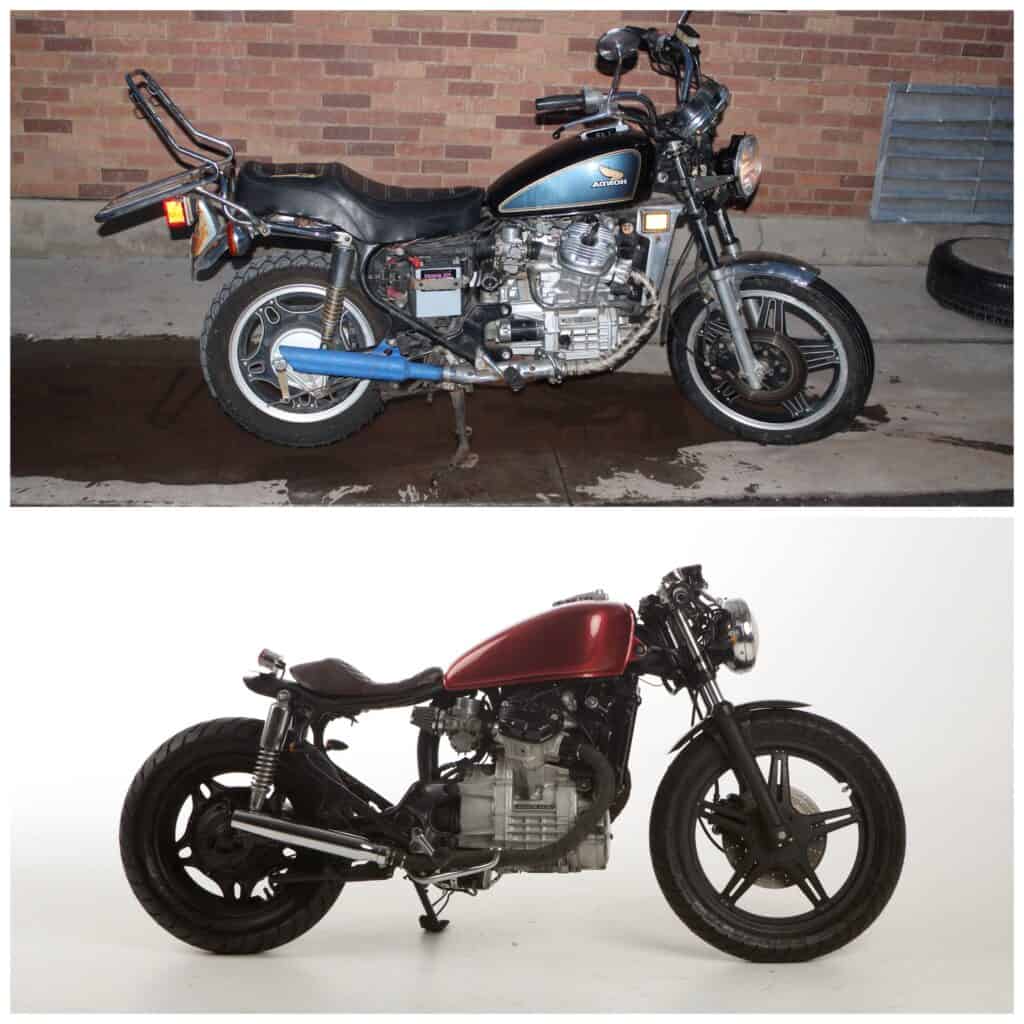
In the last few years, cafe racers have become increasingly popular, especially among the younger riders. It’s no wonder they’ve become popular; their sleek and minimal look is enticing to anyone who looks at them, motorcycle enthusiast or not.
A lot of people like to take older motorcycles and turn them into these remarkable masterpieces. Having previously owned a motorcycle restoration business and still restoring today, I’ve seen many cafe racer transformations that I’m proud of. In this article, I’ll show before and after pictures of some of my cafe racer builds as well as some of the progress in between.
1980 Honda CB750
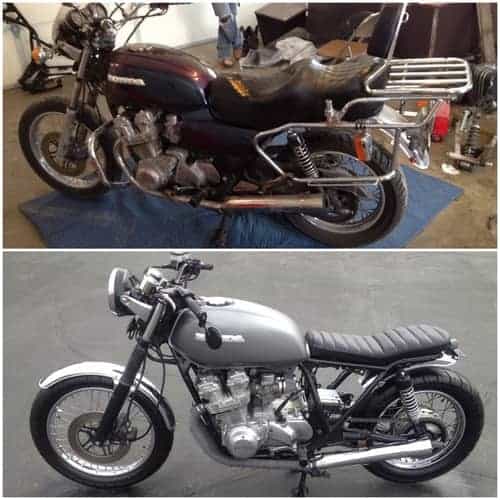
This is a before and after of a cafe racer I built. This is a 1980 Honda CB750 and was the second motorcycle I ever owned. I bought this motorcycle with the intention to flip it and use the profit to buy an engagement ring for my girlfriend.
I bought the bike for $800 from a man in Ogden, Utah who decided he was too old to keep riding. It used to be bright purple with a gigantic windshield, luggage racks, grandpa handlebars, leather tassels on the grips, and anything else obnoxious you can think of. I bet I took off 50 – 75 pounds worth of accessories from this thing.
This bike was in relatively good working condition so I didn’t have to do much with fixing the mechanics of it. I always do a thorough clean and rebuild of the carbs during any motorcycle restoration simply because these bikes are older and likely need it anyway.
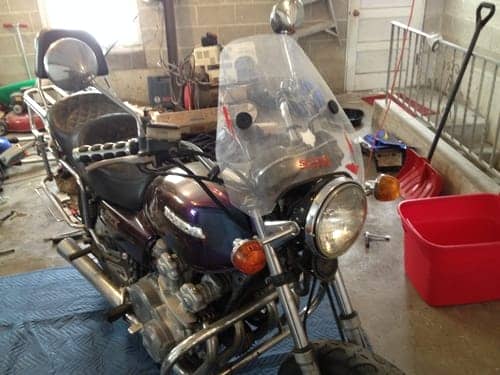
I had completely stripped the motorcycle down to the frame including removing the engine. This was before I realized you could repaint the frame without having to go through the hassle of removing the engine (see my article here to learn how to paint a frame without removing the engine). My soon to be fiance even helped out with cleaning the side engine covers.

It took me about three weeks to completely restore this bike. I sold this motorcycle within 12 hours of posting it for sale, the fastest I’ve ever done. I had 6 offers in 12 hours and told whoever could get the cash to me first could have it.
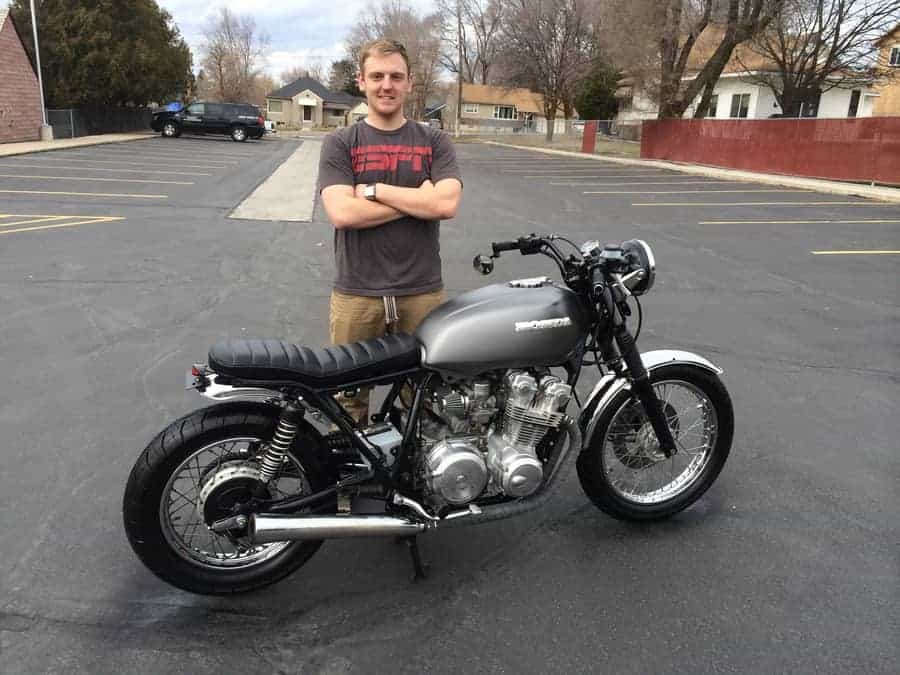
Including the purchase of the motorcycle, I spent about $1,300 on it and sold it for $3,000. Needless to say, that profit helped purchase an engagement ring for my girlfriend. It was a lot of fun riding this bike around Logan during college and it definitely got a lot of looks.
1983 BMW R80
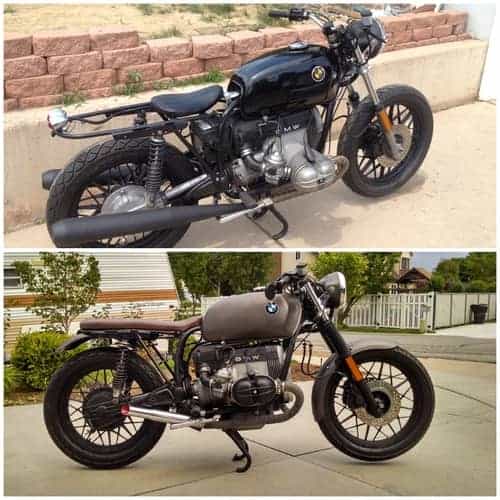
BMW began building their motorcycles in 1923. They have the apposed horizontal cylinders which is why BMW motorcycles have the most recognizable engine of any motorcycle.
The R80 model used this engine configuration for greater air cooling during races. Having the cylinders facing directly outward maximized the air flow and heat transfer off the cylinder fins.
The picture above is a before and after cafe racer version of the BMW R80 I restored for my brother-in-law. He was the person who initially got me interested in motorcycles which ultimately lead me to restoring motorcycles in the first place. I went with him to Denver where he bought this motorcycle for $2,500 in which he still owns it today.
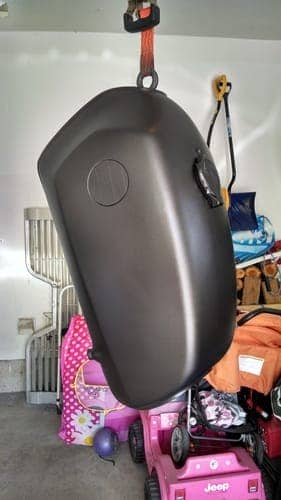
I ended up painting the tank twice because my nieces accidentally put a dent in it when they were playing out in the garage. I love the bronze color chosen for the tank, it really turned out great.

I also chopped and resized the rear hoop for the seat and ended up welding a new seat pan for an upholsterer to use as the base. I painted the fenders to match the color of the tank and I also made a custom battery box to completely hide the battery. See my article here to learn more about how to hide a motorcycle battery.
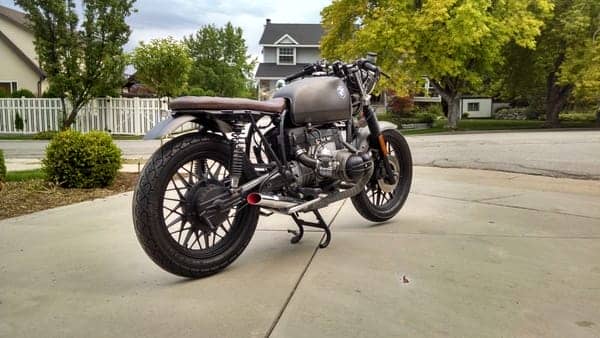
This BMW R80 wasn’t too bad to begin with, but as you can see with a few little touch ups you can make a cafe racer look a little more extraordinary. This was a fun build and it gave me much needed experience on BMW bikes.
1980 Yamaha XS850
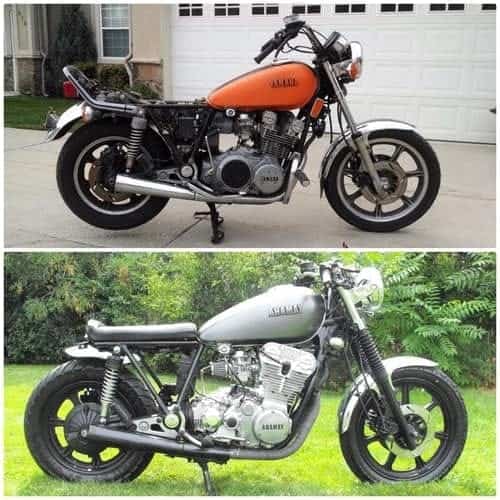
Here we have a before and after picture of a 1980 Yamaha XS850 cafe racer. This is actually the second 1980 XS850 I rebuilt. As you can see, it shined up very nicely and was given a much need face lift.
I restored this motorcycle the summer after my wife and I got married. I was working in construction at the time and had a boss that was simply terrible. By this point I had already restored 3 or 4 motorcycles. I did the math and found that I could make more money restoring motorcycles full time during the summer than I would working in construction (and I wouldn’t have to deal with a horrible boss!). That was the summer I also decided to stay in school and keep at it until I graduated.
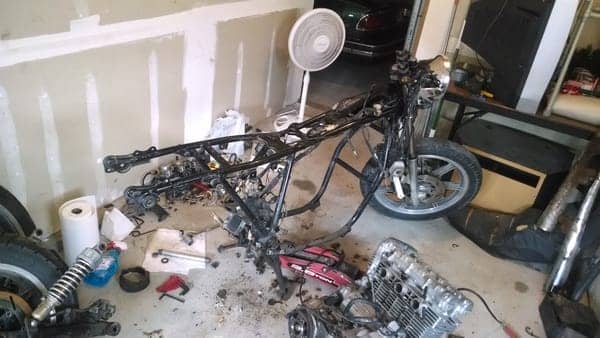
I bought this motorcycle for about $300. I got a good deal on it because it wasn’t running and I assumed it was because the carbs were dirty. Little did I know that I ended up having to replace the entire engine because the original was bad. But lucky for me, someone was selling the exact one I needed on the local classifieds and I was able to buy it for $200.
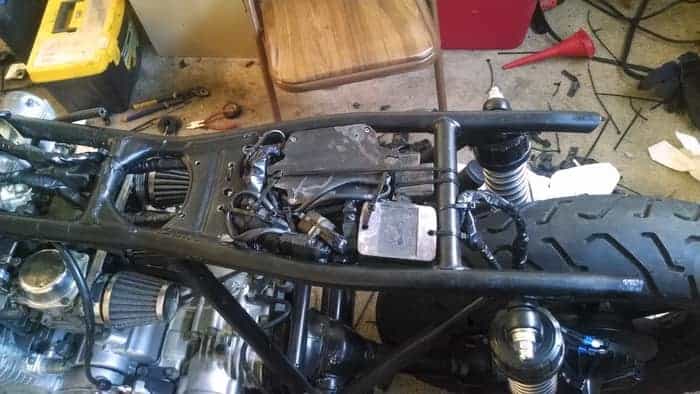
It was by this time that I became quite proficient at hiding the wiring. Hiding the wiring is one of the fundamentals of a cafe racer so it’s important to know how to do it if you’re wanting that look.
It took three weeks of full-time work to get this motorcycle completely restored and ready to sell. I sold this one pretty quick, within a few days. Including the purchase of the motorcycle and the new engine, I spent about $1,000 fixing it up and sold it for $4,000. That $3,000 profit in three weeks was way better than working for a horrible boss. To learn more about how to flip a motorcycle for profit, see my other article here.
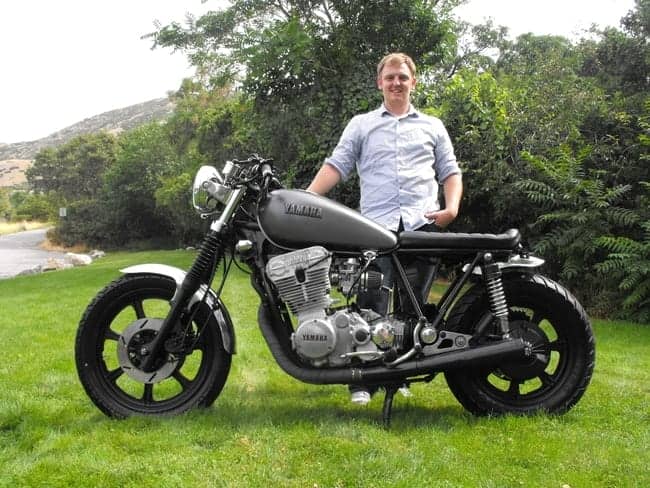
1981 Honda CB650
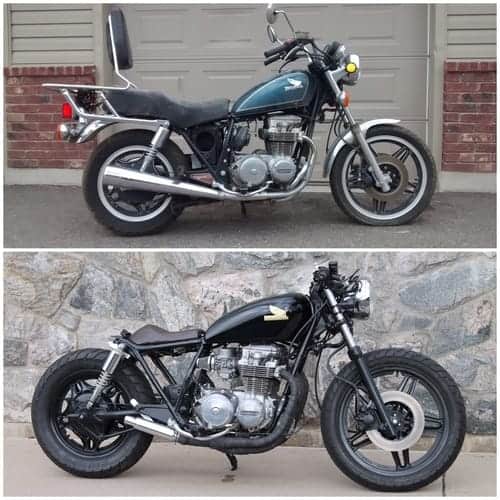
This is one of my favorite before and after pictures of a cafe racer I restored. I decided to experiments a little bit with the aesthetics of this one and gave it some accents of gold throughout. It turned out amazing.
I bought this motorcycle for $400 from a man in Pocatello, Idaho. He claimed there were some engine problems because it hadn’t started in years. After I took a look at it, I quickly knew it wasn’t an engine problem, rather it was a carburetor problem which is a much easier fix.
As soon as I took it home, I cleaned and rebuilt the carburetor, placed it back on the motorcycle, and it started right up! There’s nothing quite like finding these diamonds in the rough and turning them into beautiful cafe racers.
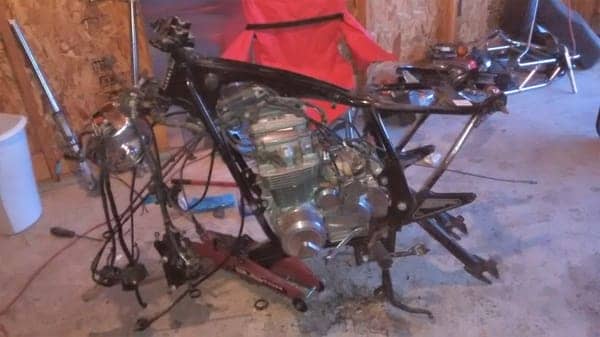
Again, I chopped the seat of the frame to turn it into a one-seater. I have a set of basic, go-to tools that I always keep handy during my motorcycle restorations. Click here to see my list of recommended tools needed to work on a motorcycle.

This was another motorcycle that hardly gave me any problems while I was fixing it up and turning it into a cafe racer. I restored this during the summer and I was able to restore it in the usual three weeks it normally takes me when I do it full time. All in, including the purchase of the motorcycle, I paid about $900 to fix it up and I sold it for $4,000.
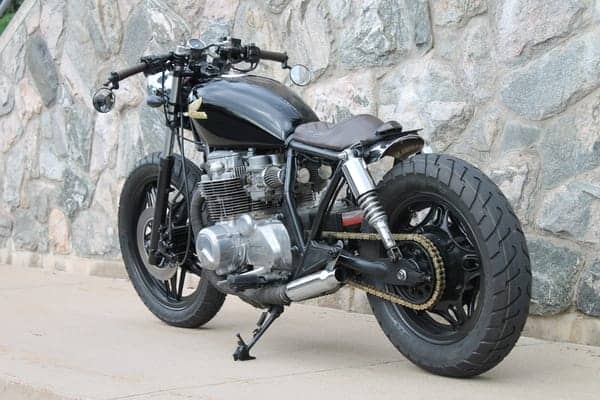
1969 Triumph TR25W
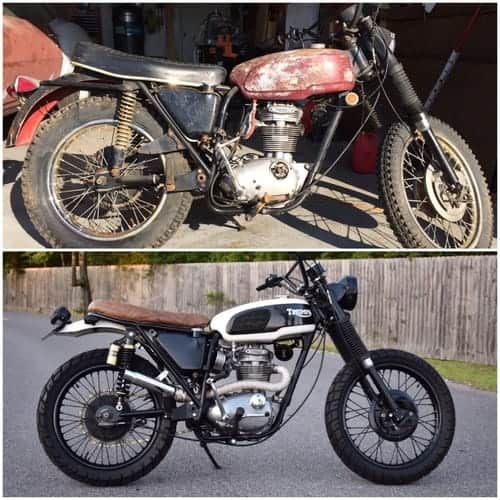
This is my favorite before and after cafe racer build I did. I loved this one so much that I ended up keeping it for myself instead of selling it. The 1969 Triumph TR25W Trophy is the twin brother to the BSA B25. There are only a few very slight differences, with the main one being a Triumph badge on the side instead of a BSA badge.
The Triumph models were a little bit less expensive than their BSA counterparts and were mostly owned by teenagers and first-time riders. So they were ridden hard and then rarely fixed. So it was no surprise to me when I bought the motorcycle when it only had 4,000 miles on the odometer.
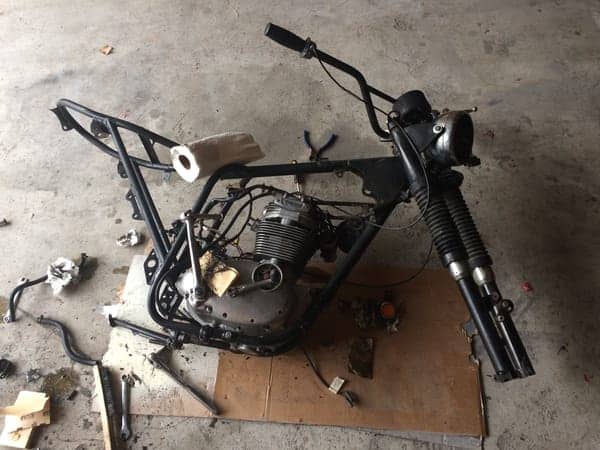
The man I bought this motorcycle from said it was entirely possible that it had been sitting for the past 30+ years without being started or used at all. It’s no wonder, this thing was pretty rough when I bought it. He bought it with the hopes of restoring it and then never did.
Though this was was my favorite, it was also by far the most difficult restoration I have ever done. It was hard finding parts, tools, and figuring out the backwards wiring (positive ground system). These motorcycles also required different sized, less common tools.
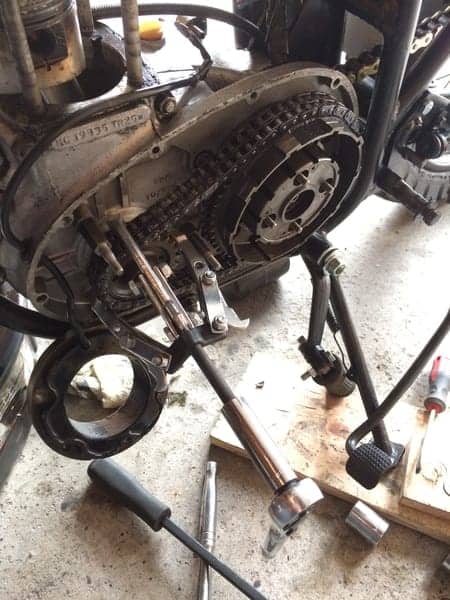
I rebuilt the engine completely all the way down to the crankshaft doing one bolt at a time. All the wiring was gone through and either replaced or rewrapped, and the frame was scrubbed and given a fresh coat of paint. I had the seat professionally made by the usual upholsterer I used on my previous cafe racer builds.
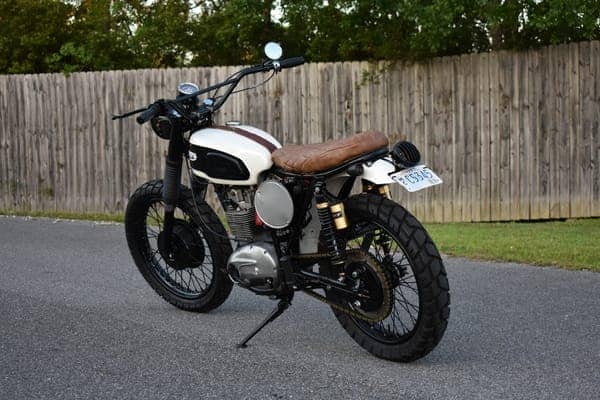
Honda CX500

This Honda CX500 was bought from a young couple in Salt Lake City, Utah. It didn’t run and there were a lot of parts that were broken on it. I bought a separate CX500 for $200 and used the parts from that to fix this one
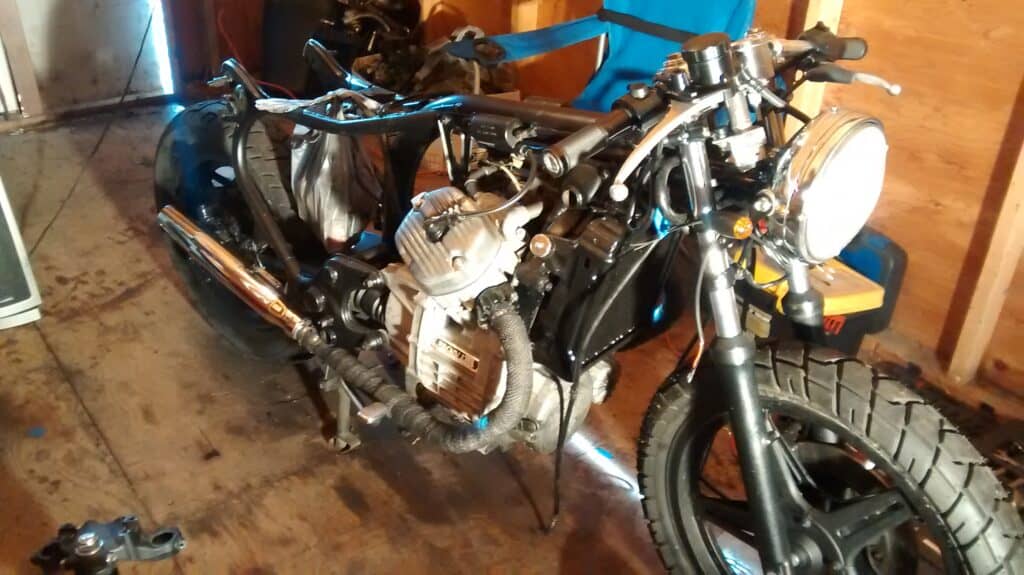
I restored this motorcycle while I was still going to college. The apartment I lived in didn’t have a garage, so I did this whole restoration in a friend’s shed with no insulation in the middle of winter in northern Utah. I would go to class all day then work on this in the evenings……boy was that cold! But totally worth it.
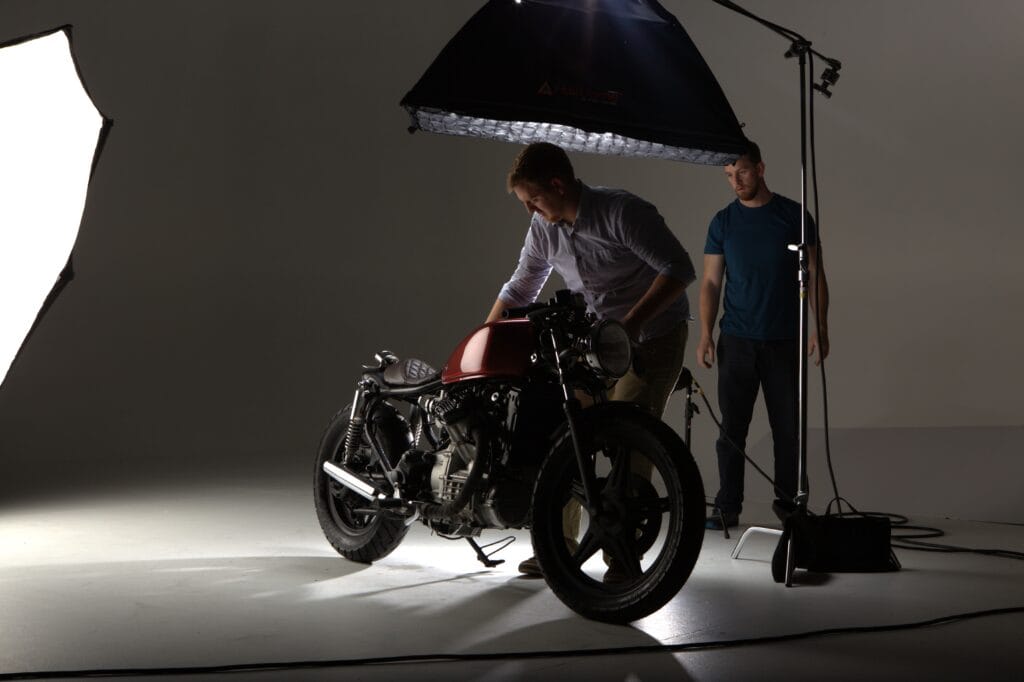
We did a photoshoot of this motorcycle because it turned out so good. This bike was also featured in several magazines including the Greek magazine Mototriti. Aesthetically this motorcycle was one of my favorites! All in with the purchase of the motorcycle, I spent about $900 and sold it for $5,000.
I have absolutely loved seeing the transformation of the cafe racers done by my own hands. It’s a hobby I will have for the rest of my life. If you have any questions about motorcycle restoration, feel free to comment or contact me, I’m happy to discuss anything motorcycle!

